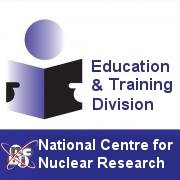NCBJ scientists help to compute huge amounts of data in global networks
2017.05.30 8:42 - admin

Developers and users of the DIRAC computational platform have met in Warsaw on a conference organized by NCBJ. Topics discussed during the conference included monitoring of performance of global network resources and message queuing technology (already used by Instagram, Cisco, Ford and other global concerns).
The DIRAC (Distributed Infrastructure with Remote Agent Control) platform was originally developed for physicists of the LHCb collaboration working at LHC in CERN to help them compute large amounts of data. To-day the platform is used by researchers in different domains. DIRAC developers and users have been meeting regularly, this year for the first time they have met in Poland on a three-day-long conference organized by NCBJ. Our scientists also participate in the LHCb experiment and use the platform on the day-to-day basis. DIRAC platform users in fact use computing power supplied by many computer centres in the world, among which CIŚ (Świerk Computer Centre) is one of the key suppliers.
“To be successfully accomplished, numerous contemporary scientific projects need large collaborations counting as much as a few thousand researchers. Home labs of these scientists may be located all over the world” – explains Professor Wojciech Wiślicki, Director of the NCBJ Complex Systems Department and Head of the CIŚ project. “The researchers may also need to compute huge amounts of data. To that end they use computational infrastructure located in tens or even hundreds of cooperating research centres. Some dedicated software tools are needed to manage distributed data computing. System users do not care if their computational tasks are executed in Geneva, Świerk or Malaysia. All they want is to get their results possibly soon and make them immediately available to their colleagues working on the other side of the world”.
Data acquired every day in the LHCb experiment would need 10 thousand CD disks to store. That data are computed in some 50 thousand processes run simultaneously in about 120 locations all over the world. Stream of data generated by all four experiments run at LHC may reach 25 million gigabytes a year. At that scale some “big data” technologies (used for example by Youtube or Facebook) must be used if data are to be efficiently transmitted and computed. It is a difficult task to maintain functionality of a computational structure of that size serving many remote users.
“Every distributed system needs to be effectively monitored” – explains Dr. Wojciech Krzemień (NCBJ), co-organizer of this year DIRAC user conference and author of one of the solutions to be presented on the conference – “Administrators of machines working within a distributed system may operate remotely, several thousand kilometres away the machines. However, they need to be informed about all irregularities on an ongoing basis to be able to immediately undertake proper actions. At the same time, resource monitoring processes must not interfere with regular user operations. Jointly with Henryki Giemza from NCBJ Information Technologies Division we have proposed a solution capable to almost immediately detect incorrectly working fragments of the grid and to determine the source of the problem (links, computing resources, storage). Our solution has already been implemented to the DIRAC platform and is currently awaiting to be configured. Our proposition covers a module to integrate the platform with some Message Queue servers. Similar solution is used by some global services including Instagram”.
DIRAC is just one of the computational platforms used by scientists. It is mainly used by physicists running the LHCb experiment i.e. one of the four large multi-detectors observing collisions of protons and heavy ions accelerated by LHC in CERN. However, other groups of physicists using the DIRAC platform include the Belle II experiment in Japan, and the BES III experiment in China. The BIOMED network (association of mainly French biologists and physicians developing medical imaging techniques for radiotherapy and neurobiology) is another important DIRAC user. The Warsaw conference has attracted scientists from Europe, Asia, and USA. They will share their experience in using the Grid and Cloud high performance computing grids.

















